
Positive and Negative Cognitions Chart Mental and emotional health
EMDR cognition is a negative or positive thought about yourself in relation to a past trauma. These thoughts can be automatic and may not be based on reality. Note that it needs to be present-moment-focused.
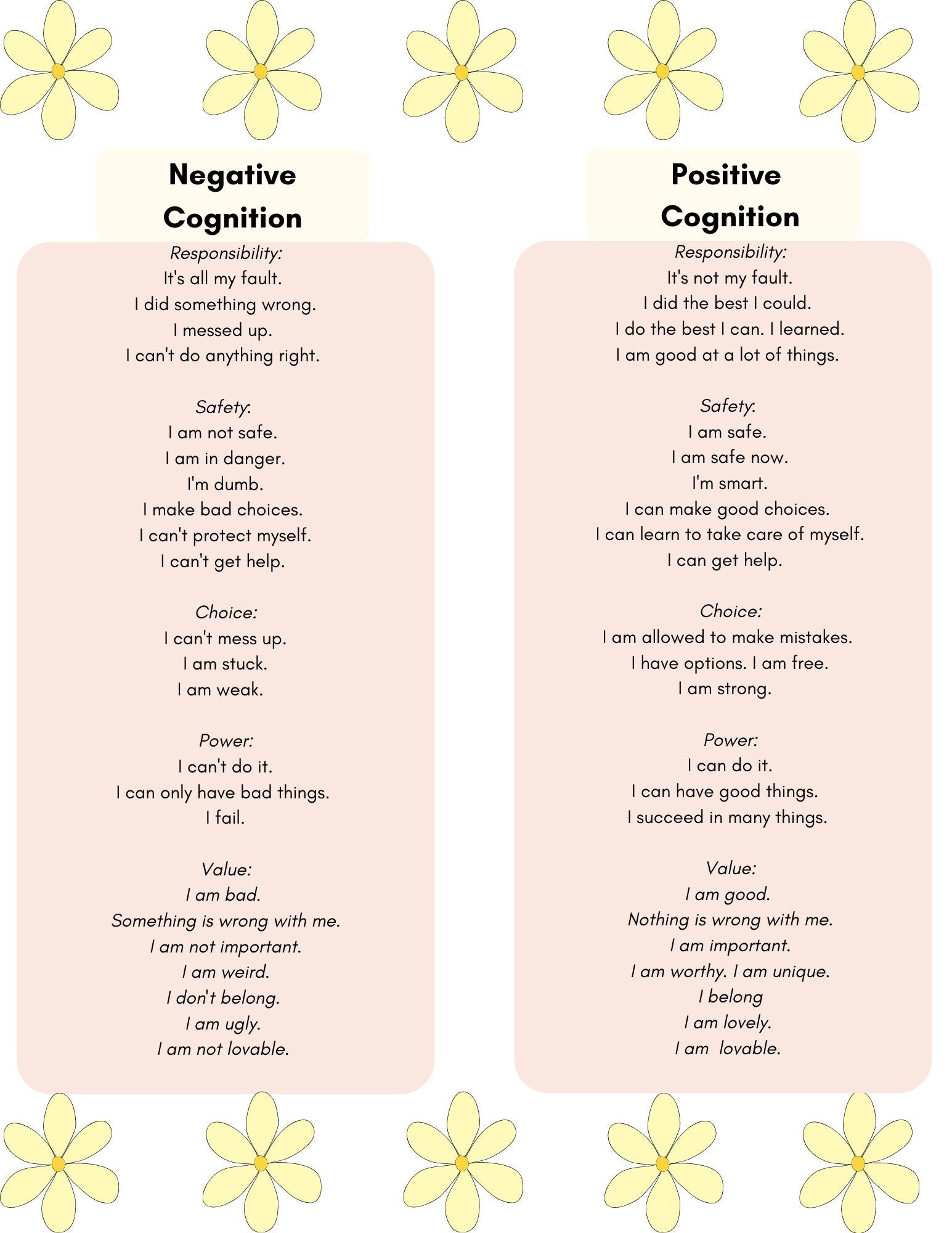
EMDR Kids Cognitions ages 818 Positive and Negative Etsy
Negative Cognition (NC)- Negative Belief of self associated with inadequately processed, maladaptiv e stored negativ e experience Positive Cognition (PC)- A positive self-belief is more adaptive than the negativ e belief being targeted in EMDR.

EMDR Negative Cognitions List & Example Free PDF Download
The idea is that by processing your beliefs (cognitions) with EMDR, your brain starts to automatically reject those painful negative self-beliefs and automatically replaces them with healthy positive ones. These two lists are from the website of EMDR Therapist Edy Nathan MA, LCSW.
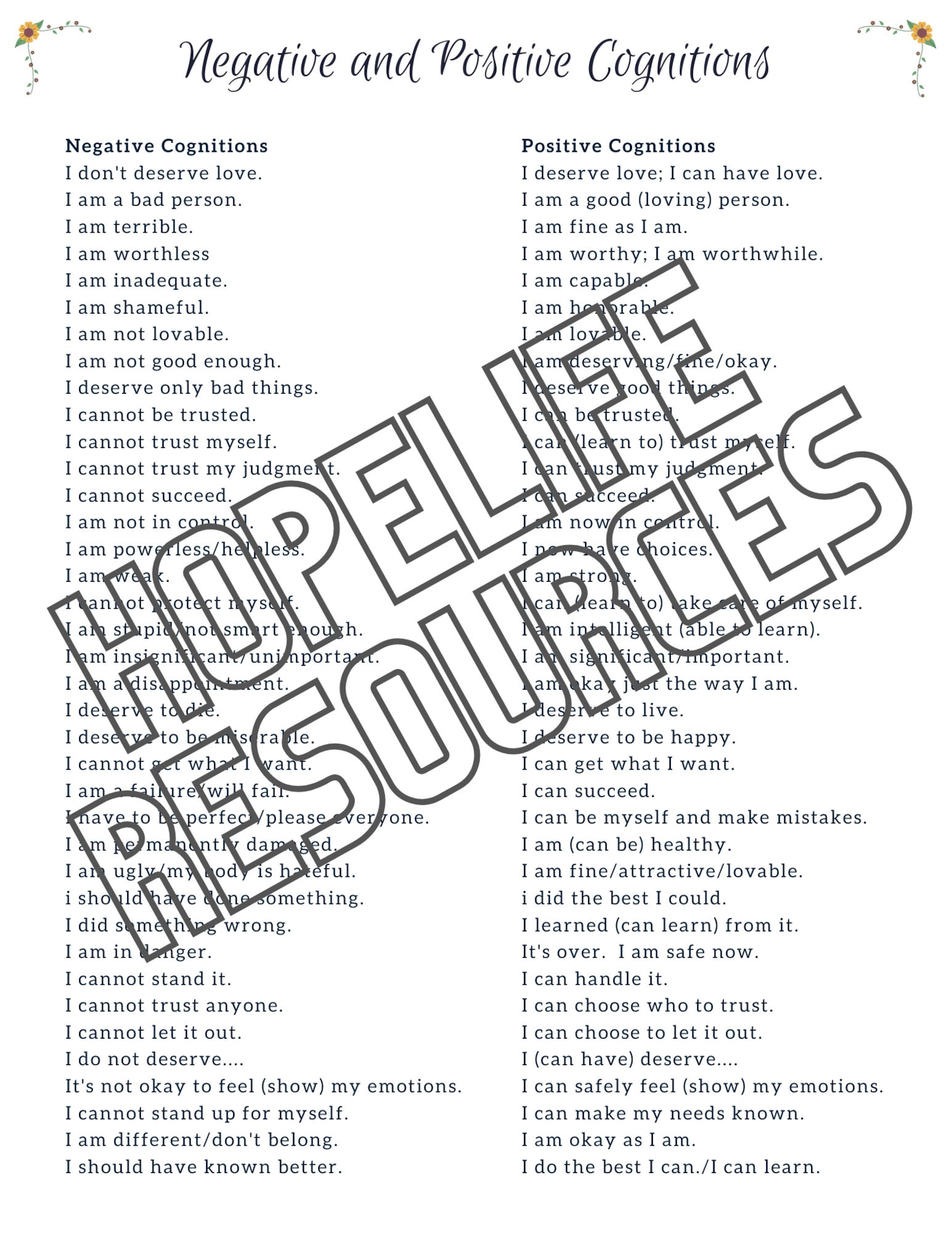
EMDR Resource List of Negative and Positive Cognitions Etsy
The negative beliefs are actually verbalizations of the disturbing emotions that still exist in your body/mind. Common negative cognitions include statements such as "I am helpless," "I am.

Negative Cognitions Clinicians Resource
The EMDR Cognitions worksheet is a list of negative and positive cognitions for eye movement desensitization and reprocessing (EMDR). A negative cognition is paired with a target image as a 'start point' for EMDR processing. Clients are also asked for a desired positive cognition, whether or not they believe in its validity.

EMDR Resource List of Negative and Positive Cognitions Etsy
What Is A EMDR Negative Cognitions List? EMDR negative cognitions lists are an important component of eye movement desensitization and reprocessing therapy, and can be used during the desensitization phase to replace negative beliefs with positive ones.

Pin on EMDR
What is an EMDR Cognition? A cognition in EMDR therapy can also be referred to as a 'belief' - and these beliefs, especially negative, can sometimes be involuntarily reinforced by an individual when they are suffering from a mental health disorder, such as PTSD.

Figure 3.2 from Exploring eye movement desensitization and reprocessing
TARGETING NEGATIVE COGNITIONS WITH EMDR AND A SHORT LIST OF EXAMPLES EMDR Therapy EMDR (Eye Movement Desensitization and Reprocessing) treatment is particularly beneficial for people struggling with traumatic memories or who have PTSD (post-traumatic stress disorder).

EMDR Cognitions Worksheet PDF Psychology Tools
EMDR cognitions refer to the negative and positive beliefs that we hold about ourselves and the world around us. Negative cognitions arise from traumatic experiences and can lead to self-doubt, shame, and anxiety. Positive cognitions, on the other hand, are empowering beliefs that promote self-worth and positive self-talk.
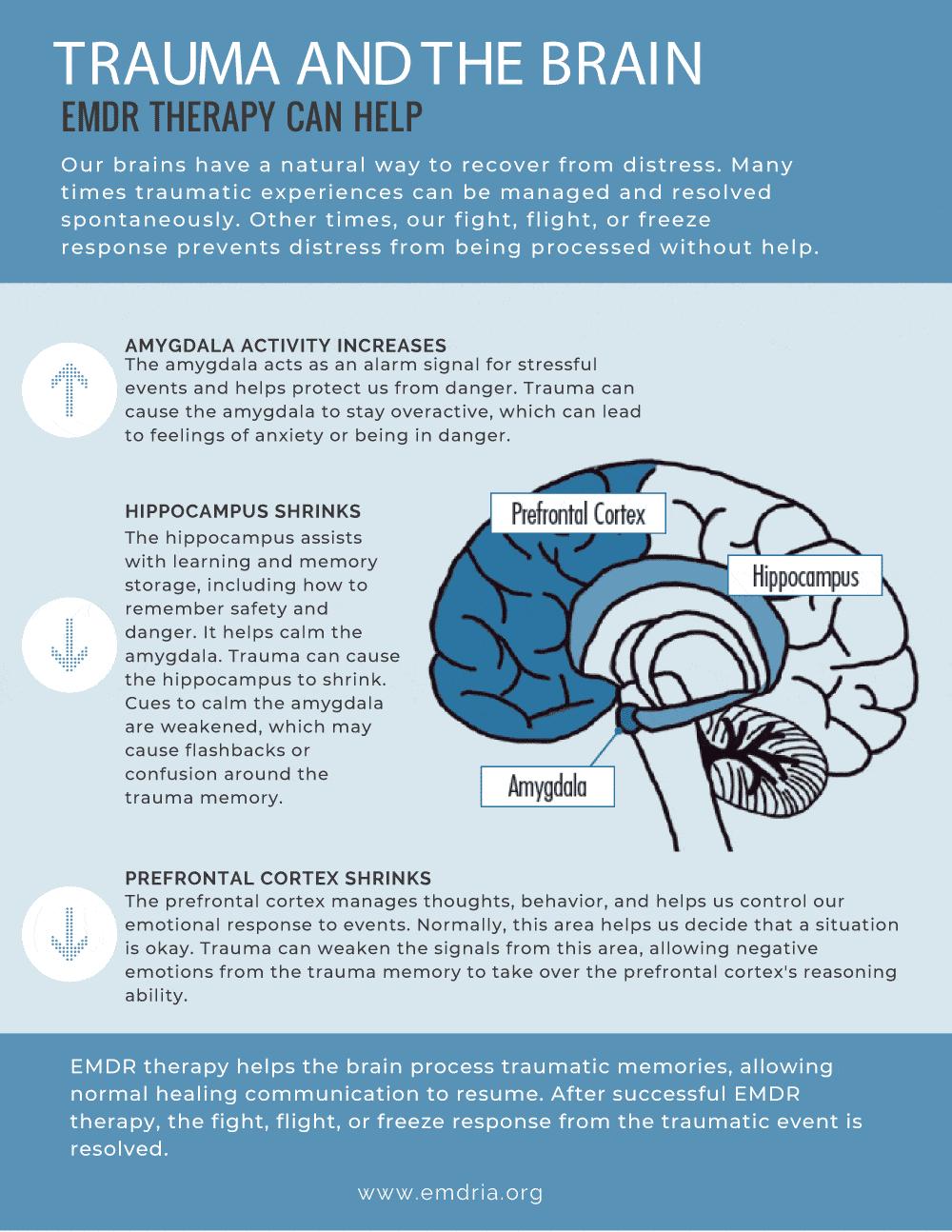
EMDR Psychotherapy for Anxiety and Depression CBT & IPT
The therapy identifies a target image and a negative cognition as part of the standard procedure, enabling the patient to be exposed to memories or thoughts without experiencing a significant psychological reaction. Contents [ hide] Importance of Targeting Negative Cognitions with EMDR The Procedure of Targeting Negative Cognitions with EMDR
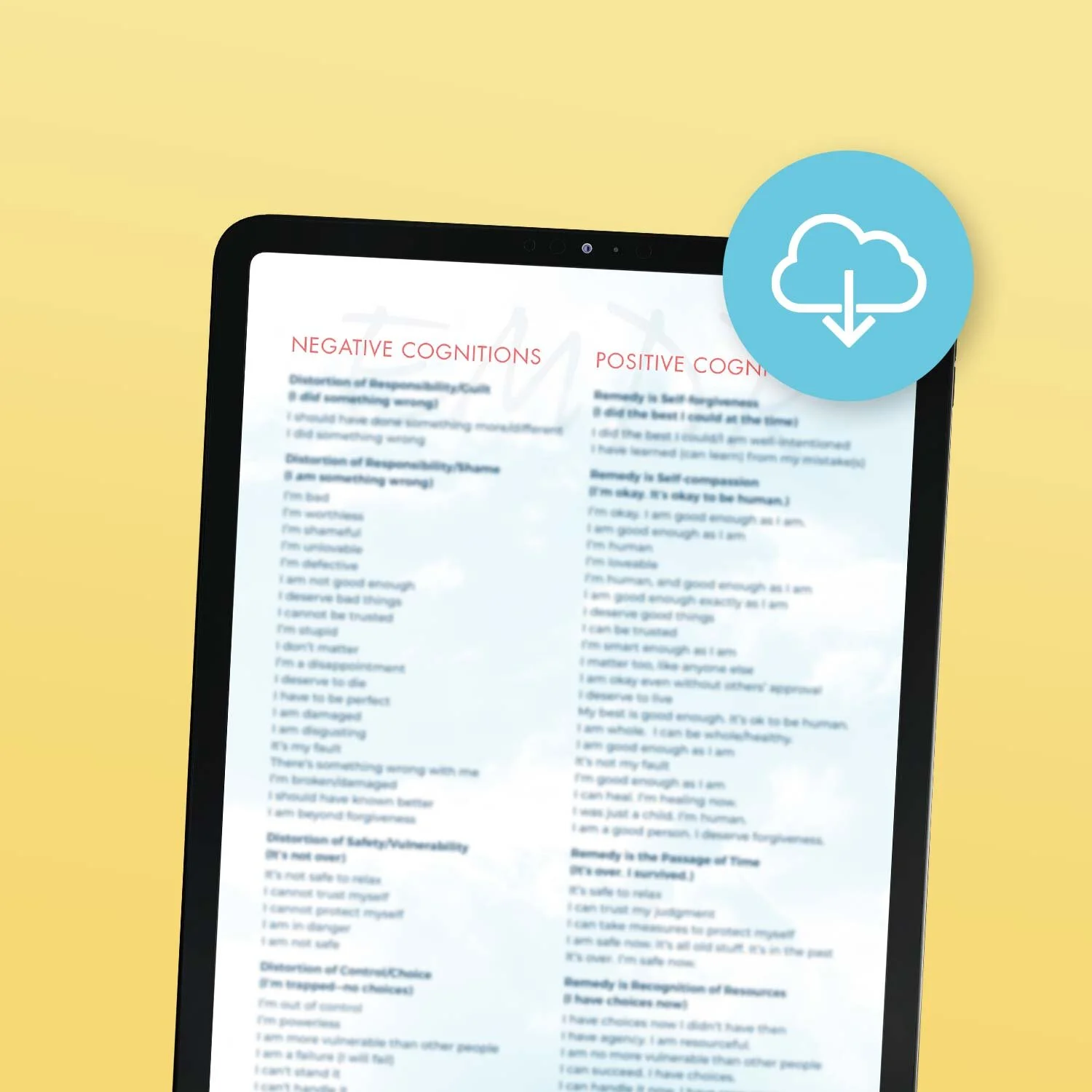
EMDR Positive and Negative Cognitions PDF Smart Therapy Tools
EXAMPLES OF NEGATIVE AND POSITIVE COGNITIONS Negative Cognitions Positive Cognitions Responsibility/Defectiveness I'm not good enough I am good enough/fine as I am

Virtual EMDR Emdr therapy, Cognitive, Positivity
Positive & Negative Cognitions List Negative (Lies) Positive (Truth) I don't deserve love I deserve love; I can have love I am a bad person I am a good (loving) person I am terrible I am fine as I am I am worthless (inadequate) I am worthy; I am worthwhile

Understanding Your Negative Cognitions Tapping Into The Root System
Counselor's Corner on Negative Cognitions Home / Magazines / Counselor's Corner on Negative Cognitions In the Counselor's Corner column in the Fall 2023 issue of Go With That magazine, EMDR therapists respond to the question of Clint White who asks: "Hi all!
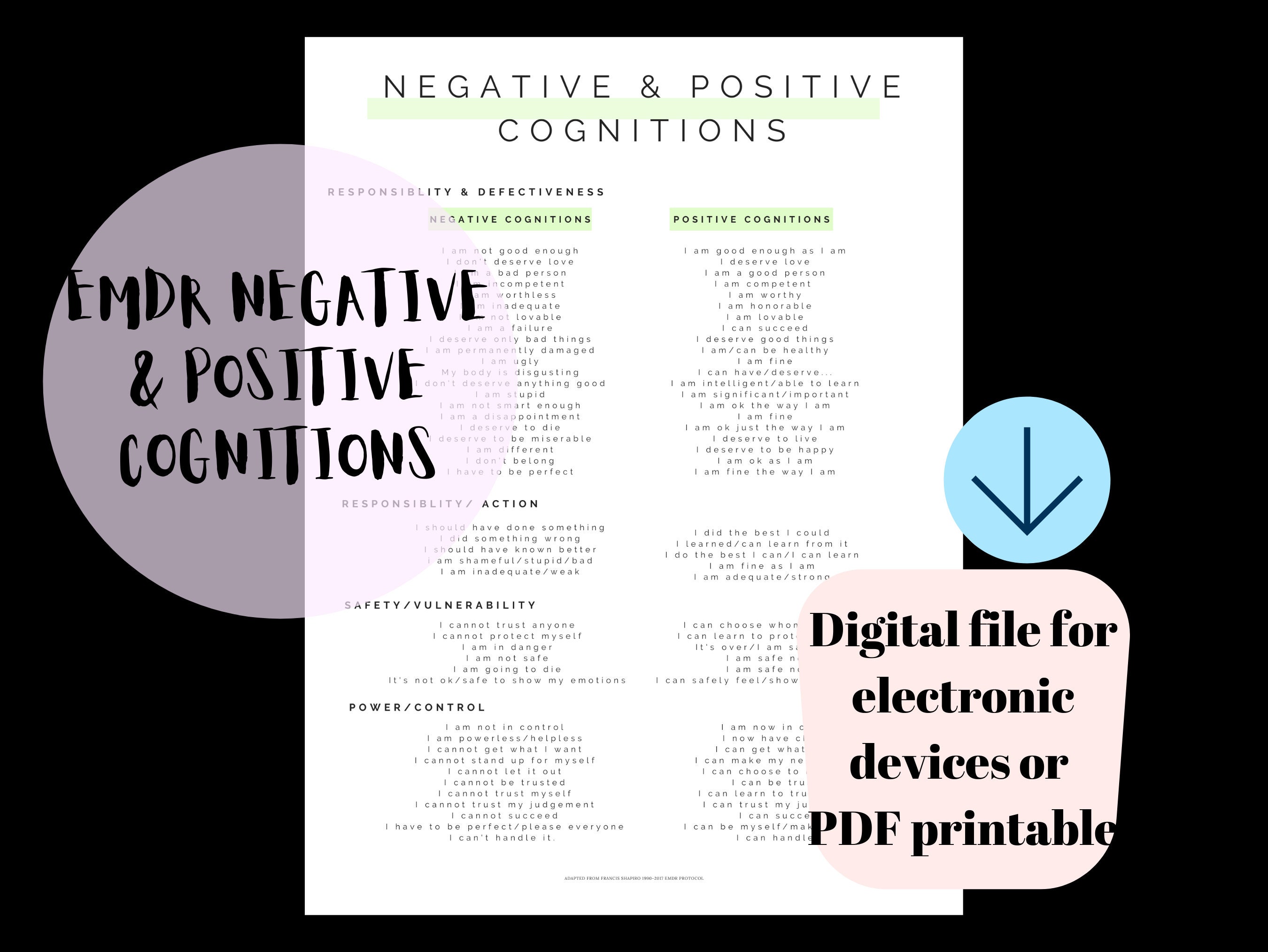
EMDR Negative and Positive Cognition List for Therapists Etsy Australia
EMDR cognitions are our beliefs and thoughts formed through to trauma. Cognitions are the absolutes in our heads—they are not just what we think, but what we truly believe. . We can have both negative and positive cognitions. We associate thoughts, beliefs, and emotions with every single memory we make—both good and bad.
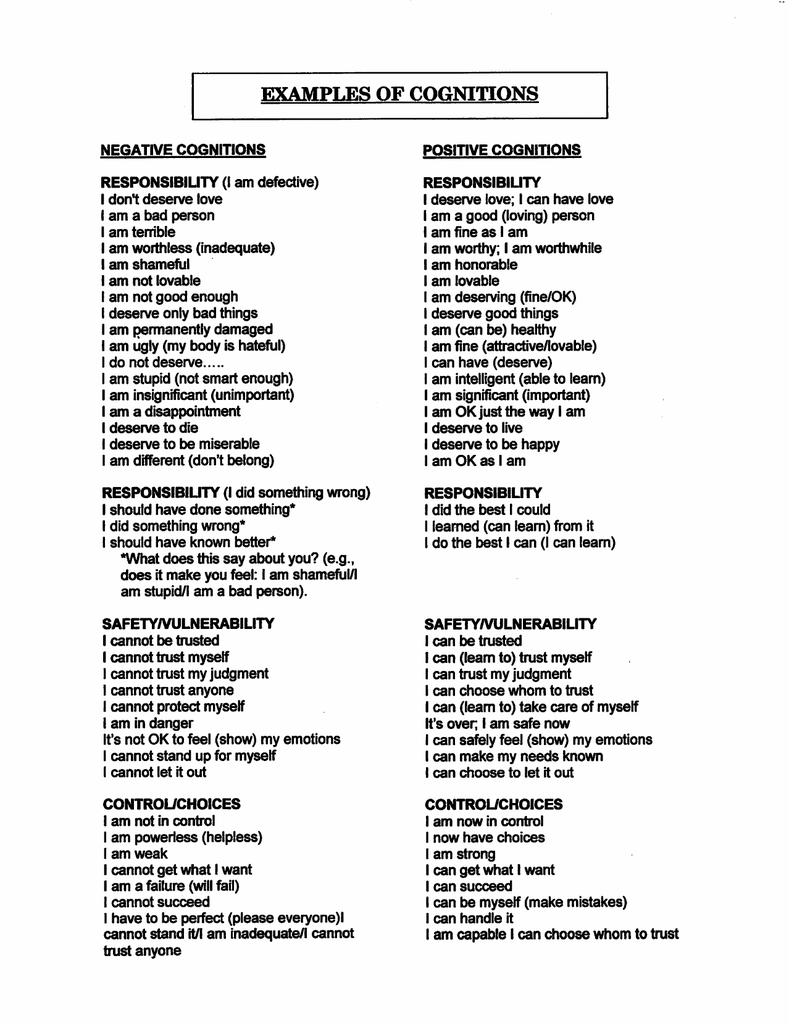
I am permanently damaged
Negative beliefs Positive beliefs RESPONSIBILITY/ I AM SOMETHING "WRONG" don't deserve love. am a bad person. am terrible. am worthless (inadequate). am shameful. am not lovable. am not good enough. deserve only bad things. am permanently damaged. am ugly (my body is hateful). do not deserve . . . am stupid (not smart enough).

EMDR Cognitions
3 Categories of Negative Cognitions Google" EMDR Negative Cognition" to find the list. Categories: Responsibility Safety and Vulnerability Control and Choice Hierarchy of Needs. What to do when the negative and positive cognition don't seem to match. Different levels of therapist involvement in choosing cognitions.